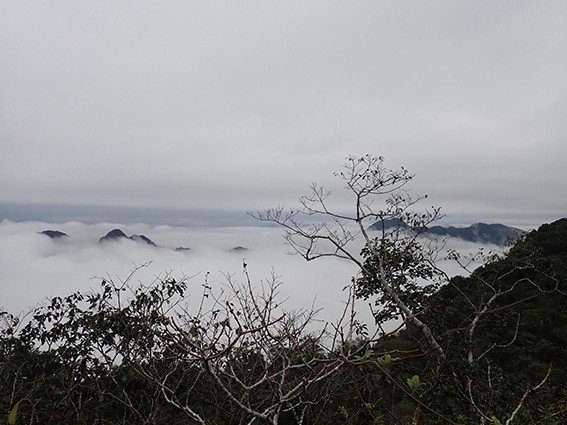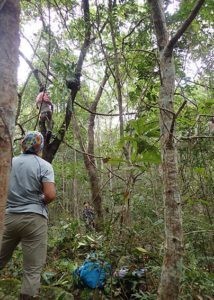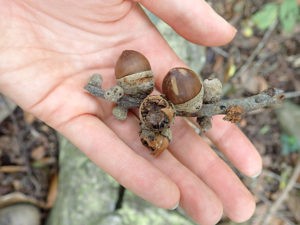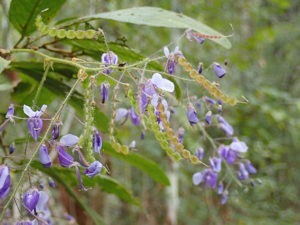Field work. Simultaneously the highest and lowest points of a career in botany (at least, in my opinion). There’s the thrill of discovery, the accomplishment of getting to the top of the mountain, the excitement of finding something new. Then there’s the exhausting physical realities of climbing that mountain (rock climbing sometimes!), camping in cold, damp places, dealing with mosquitoes galore and nursing your bruises, blisters and sore muscles for the weeks afterwards.

The view from 1,400m on top of a limestone mountain. It wasn’t an easy climb…
There is no such thing as an easy and comfortable way to do field work. At least, not in Lao PDR. The closest you get to ‘comfortable’ is when you traverse the roads in a 4WD, stopping when you see something interesting and getting out to collect it. This kind of field work certainly adds to our knowledge of Laotian plants, and many interesting species have been collected this way, but roadsides capture only a small number of the plants present in the country. For other species you have to head into the jungles or up the limestone mountains.
At Pha Tad Ke we do as much field work as time, access and budget allows. We work with a number of research partners and travel throughout northern Lao PDR to explore the flora. With only 30% of the country’s plants currently catalogued we have a big job ahead of us to catalogue the rest.

Our collaborators from Taiwan looking at a Platycerium fern up a tree
When doing field work we collect mostly living plant specimens, which we then grow in our nurseries and garden. These ex-situ collections allow us to display some of the floral diversity of Lao PDR as well as research the plants more easily (having easy access to them year round is a good start). Our collections are also available for visiting researchers to study.
We also collect some plants to make dry, pressed specimens. Specimens like these allow us to ‘freeze a moment in time’ in the life of a plant. Collections are normally made of plants when they are flowering and fruiting, and these can then be studied at any time of year. We currently don’t have good storage facilities for this material so we don’t collect as much as we’d like. We plan to create such a storage and research space (a herbarium) once our budget allows.

Collecting the dried acorns of a Fagaceae for herbarium material.
On our most recent field trip (up a limestone mountain about 1 hour out of Luang Prabang) we surpassed 500 living specimens collected in the year 2017. This might not sound like a big number, but for a small, new botanic garden dealing with such challenging collecting conditions as are found in Lao PDR we think it’s pretty impressive. We’re hoping for an even more productive year next year – we’ll keep you posted on our progress.
In the mean time I’ll keep nursing my blisters…

It’s best to collect plants when they’re flowering and fruiting. This was one of our recent collections for drying.
By Bryony Smart, PTK Botanist.
All photographs also by Bryony Smart.


